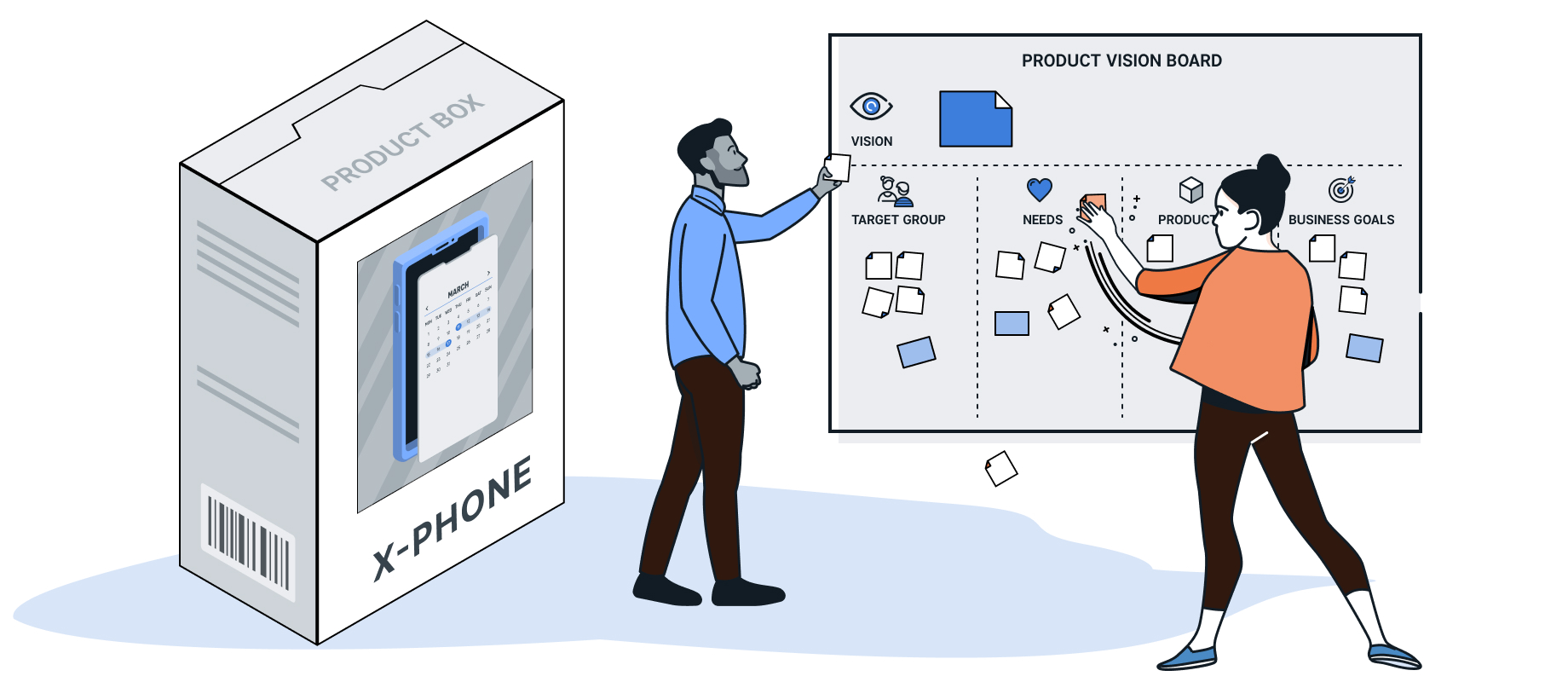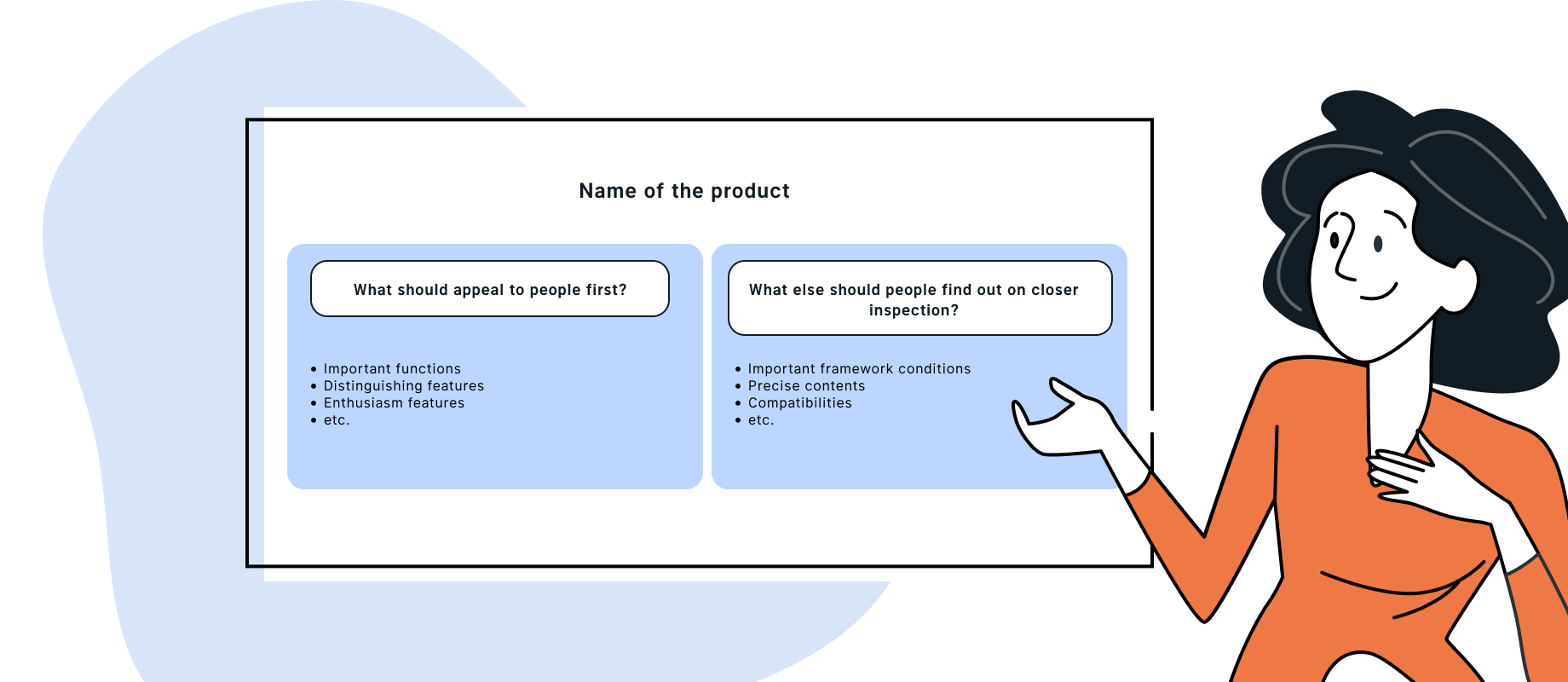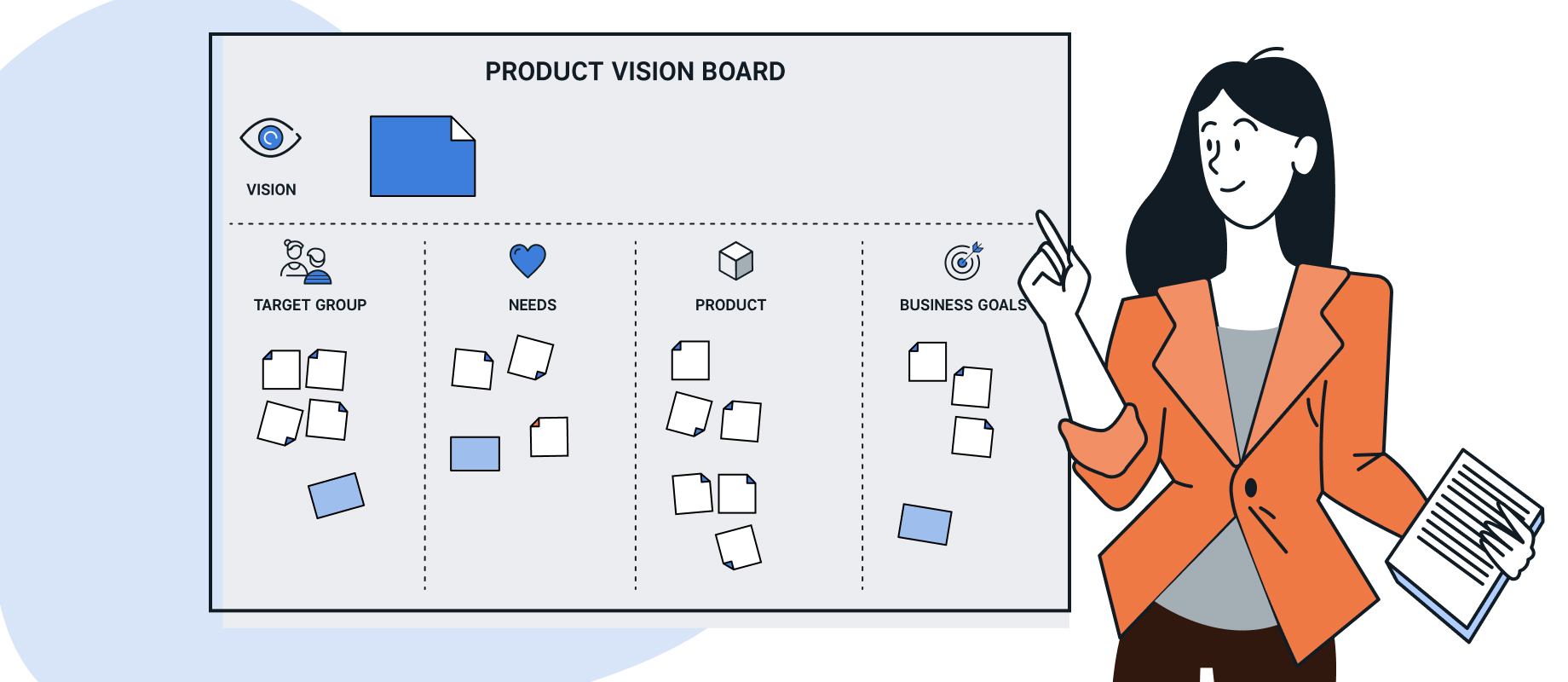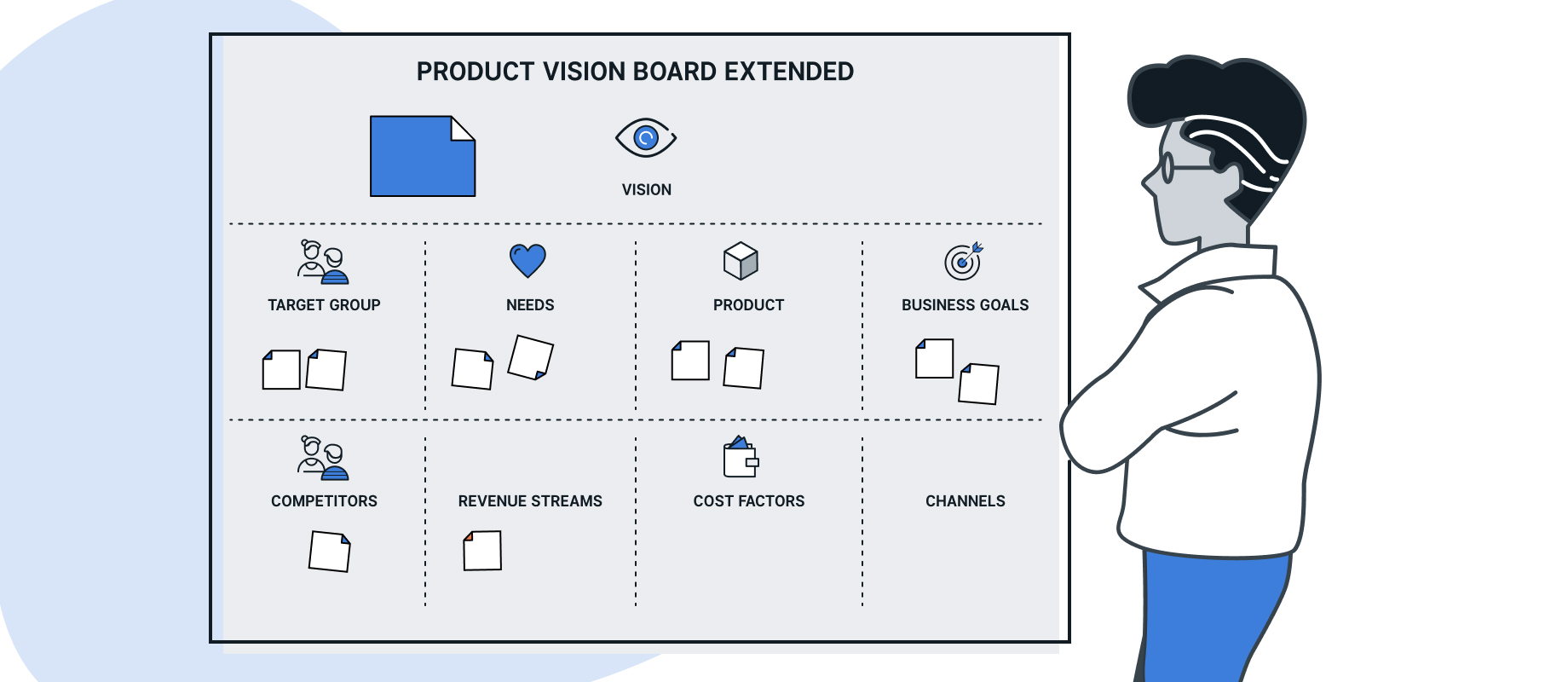
Successful products and services need a common direction. In large software development projects, there can quickly arise several differences of opinion as to what a product should look like and what it needs to achieve a specific product goal. To get everyone involved on track, our product owners are therefore increasingly relying on the creation of product visions. But what are they about and how are they used efficiently in agile software development? This is exactly what our Xperts are looking at in our current series of blog posts.
What is a product vision?
A product vision serves as a description of the desired goal for a product. Typically, the various features, functions and benefits of the product for a specific target group are included in a product vision. It describes not only what the product can do, but also what problem it should solve and the added value for the target group.
These characteristics make the product vision the perfect guide for the entire development team. As a rule, it also ensures that all features are geared towards achieving the desired end product. A product vision also ensures increased motivation within the team and enables everyone involved to work towards the same goal without any ambiguity.
Methods for creating a product vision
In the following, we will look at the different methods that support the creation of a product vision.
Product vision interview
The product vision interview lays the foundation for developing a shared product vision. Three different roles occupy a decisive function here: the recommending person, the interested person and the observing person.
The recommending person takes the lead in the interview. They share their vision for the product and also make specific recommendations on how this vision can be implemented. Their role is to steer the discussion and keep the conversation going by asking relevant questions and presenting ideas.
The interested person is actively interested in learning more about the product vision. They ask targeted questions to gain a deeper understanding of the vision, helping to shed light on different perspectives. Through their engagement, they ensure that the conversation remains lively and that new insights are gained.
The observer takes a reserved role and concentrates on observing the interaction between the other participants. They refrain from actively participating in the conversation so as not to influence the discussion. Instead, they collect valuable observations and can then provide constructive feedback.
It is important that all participants make sure that their answers keep the conversation going and promote the dynamics. Each role contributes in its own way to developing a comprehensive understanding of the product vision and ensuring that all participants are involved. In this way, the product vision interview can lead to successful results and serve as a basis for further product development.
Product vision statement
Template for a product vision statement:
For the [target group]
which has [the following problem] hat,
is [our product name]
a [product type],
which has [these main characteristics] hat,
to generate [following user benefit].
The product vision statement is a central document that clearly defines the direction and goals of a project. When drafting it, it is essential to consider different options and involve people with different roles.
The product vision statement should be discussed in detail to ensure that all relevant aspects are considered and broad agreement is achieved. Open discussions make it possible to identify potential challenges at an early stage and find joint solutions.
By involving people with different perspectives and expertise, it is possible to make the product vision statement more precise and comprehensive. It serves as a guideline for further action and helps to clarify the goals and expectations of all those involved.
All in all, the product vision statement is an important tool to ensure that all stakeholders develop a common understanding of the project and work towards a successful outcome.
Example for a product vision statement:
For [technology enthusiasts],
who want [who want to organize their lives digitally] wollen,
the [the X-Phone],
a [smartphone],
which has [powerful hardware and an intuitive user interface],
to enable [enable quick and easy appointment management].
Product box/Product book cover
The Product Box is a creative and effective method of highlighting the core functions of a product and appealing to a target group. Similar to product packaging or an advertising flyer, it presents the most important aspects of the product in an appealing way to arouse interest and make people want to buy it.
Arguments are placed in the product box to emphasize the advantages and benefits of the product and convince potential buyers. The outstanding features and unique selling points of the product are brought to the fore in order to leave a lasting impression.
While the most important information is presented on the front of the product box, further details and additional information can be found on the back. For example, technical specifications, requirements and conditions can be listed here to give the target group a comprehensive picture of the product.
The Product Box also offers the option of being designed offline with the help of brochures and magazines. This enables companies to present their products effectively outside of the digital space and address potential target groups.
Overall, the Product Box is an effective marketing method for drawing attention to a product and convincing the target group of its added value. It combines an appealing design with relevant information, creating an attractive presentation option for any product.

Product vision board
The Product Vision Board is an extremely useful tool for expanding a product vision statement and adding important information. It not only serves as a supplement, but also as a tool for internal communication within the organization and supports strategic decisions.
When completing the Product Vision Board, we recommend that you work through all fields quickly and consistently. This ensures that all relevant aspects are taken into account and the board can develop its full potential.
An important step when using the Product Vision Board is to return to the previous field after completing it and check whether the contents harmonize and complement each other. This promotes a coherent and consistent picture of the product vision.
Another advantage of the product vision board is its ability to grow over time. Through regular updates and adjustments, the board can meet continuous requirements and thus ensure that the product vision always remains up-to-date and relevant.
Overall, the Product Vision Board offers a structured and effective method of concretizing, communicating and continuously developing the product vision. It promotes collaboration within the team, strengthens understanding of the vision and helps to define successful strategies for product development.

We recommend the Product Vision Board Extended to all those who want something even more thorough. This extends the functionality of the traditional Product Vision Board by providing additional fields for an even more comprehensive vision of the product. It enables a more detailed representation of the product vision and integrates research findings and other relevant information to base the vision on sound insights and underpin strategic decisions.
This expanded version of the board provides a holistic approach to developing and communicating the product vision, enabling more informed strategic decisions to be made and the product to be successfully developed over the long term.

Strategies for creating the product vision
Creating a product vision requires a strategic approach that ensures that all relevant perspectives are taken into account. In order to develop a comprehensive and meaningful vision, different people from different knowledge domains should be involved. This includes:
- Person designing the product to consider technical and design aspects.
- Person responsible for the product to include business and strategic requirements.
- Person using the product to understand the user perspective and consider the needs of the end users.
- Person who facilitates and watches the time to ensure the workshop is efficient and focused.

Ideally, these people should come from four different knowledge domains to ensure a diverse perspective and that all relevant aspects are covered.
A workshop to create the product vision should be limited in time, ideally to one day. This keeps the process focused and participant engagement high. It is important to actively involve all participants in the development process to ensure that their perspectives and ideas are taken into account and to promote understanding and commitment.
By strategically engaging different perspectives and making efficient use of limited time resources, a product vision workshop can be a highly effective means of developing a clear, meaningful and comprehensive vision for a product.
The second part of our series will focus on concrete methods and recommendations for integrating product visions into agile software development..
IT Consulting
Learn more about our services